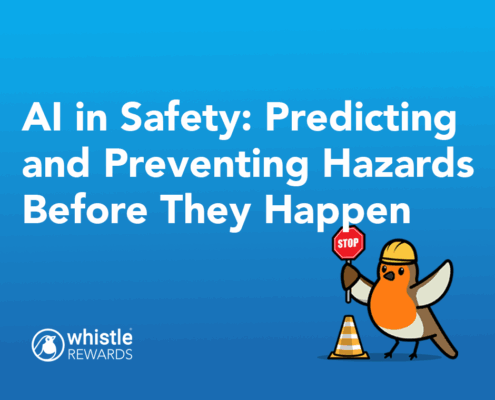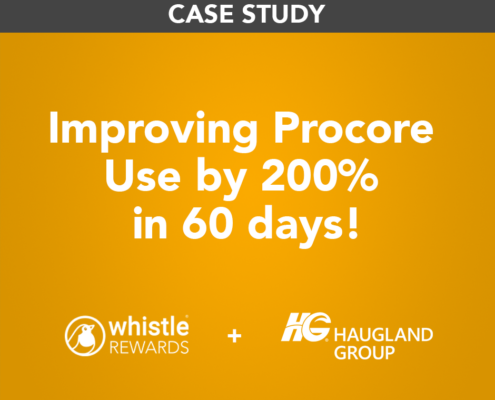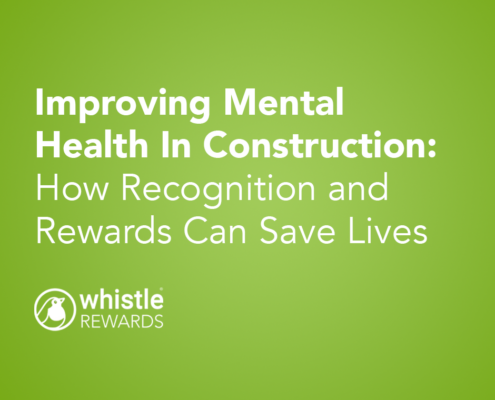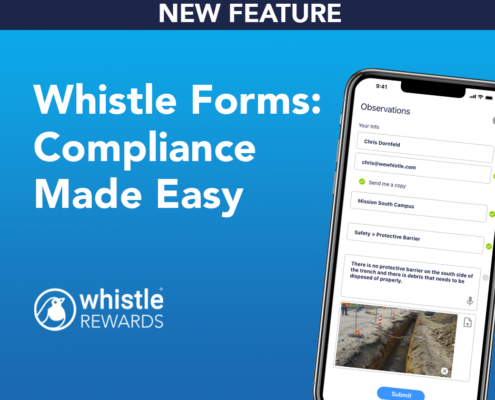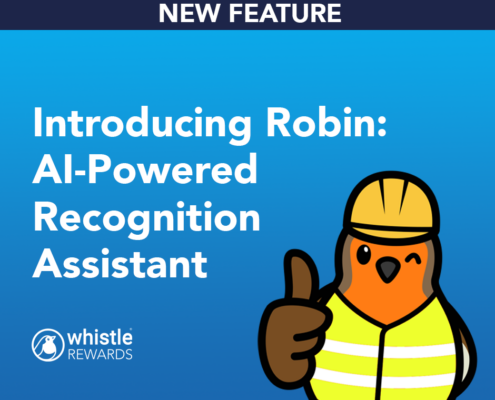Why Rewarding Your Construction Staff Is More Than Just “Paying Twice”
Why Rewarding Your Construction Staff Is More Than Just “Paying Twice”
Construction is a tough job that requires a great deal of skill and grit – a lot is expected, deadlines are tight, safety is paramount, and every project is a complex orchestration of people.. Changing behavior in these complex environments can be a particular challenge.
Rewards and incentives play an important role in helping people on the job site overcome the natural resistance to change and adopt a new behavior. Rewards are also effective at reinforcing behaviors that might feel unimportant but are critical to the company. Everyone on a job site can relate to filling out a report that feels tedious or unproductive because it provides no clear immediate benefit when compared to the immediate and visible result of actual building.
These challenges are compounded when a job site compromises teams from dozens of sub contractors, suppliers and partners who all have different reporting expectations and cultures.
“Why should I pay my staff twice for work they are supposed to do?
A question we hear from some construction managers centers on the idea of paying people for work they should already be doing. “Why should I pay my staff twice”.
The short answer is you’re not. You’re paying them to learn new behaviors.
A well-designed rewards and recognition program is not about paying your staff twice—it’s about investing in your people, the sustained success of your projects, and the long-term health of your business.
Research consistently shows that positive reinforcement, or “carrots,” are more effective than punitive measures, or “sticks,” in driving long-term behavioral change. Positive incentives encourage employees to adopt desired behaviors by making these actions personally rewarding, thus fostering intrinsic motivation.
For example, Whistle Rewards’ integration with Procore automates sending rewards for completing small tasks or goals in Procore such as safety observations. Spending on average $5 a day per project increased safety reporting by 50% in 30 days. More importantly when the reward ended, the behavior (increased reporting) continued. The reward helped people overcome their resistance to a new process and helped habituate a new behavior.
This is particularly relevant in the construction industry, where safety and productivity are critical. When individuals feel that their actions are self-endorsed, they are more likely to engage in those behaviors over the long term. Punitive measures can backfire by triggering resistance or the boomerang effect, where the behavior you’re trying to prevent becomes more prevalent. This phenomenon is well-documented in construction, where poorly framed safety messages can inadvertently lead to increased non-compliance.
Why incentives have long-term impact
The concept of “crowding-in” behaviors is essential to understanding why incentives are so powerful in the long term. While rewards are temporary, their purpose is to establish new habits and behaviors that will continue even after the incentives are no longer in place. External rewards can initially motivate behavior, which over time can become internalized, creating long-lasting changes in how employees approach their work(1). For example, recognizing and rewarding safety compliance can help workers internalize safety as a core value, turning what might have started as a behavior driven by external rewards into a habitual, intrinsic part of their work ethic. Over time, these “crowded-in” behaviors become self-sustaining, leading to a safer, more productive work environment.
This approach transforms incentives from simple financial rewards into strategic tools for behavioral change. By using rewards to reinforce desired behaviors, you’re not just encouraging employees to act a certain way because they want to earn a bonus; you’re helping them develop habits that will benefit both them and the company in the long run. Eventually, these behaviors become second nature, reducing the need for constant external motivation and leading to a more self-regulated, high-performing workforce(4).
Recognition’s Huge Impact on Team and Retention
Employee turnover is also critical in construction with an estimated five workers leaving for every new person joining(7). The cost to recruit, train and onboard a new employee is just the start – lost productivity, impact on the remaining team, lost knowledge can expand the cost anywhere from 50% to 200% of their annual salary.
Not feeling valued or appreciated by a manager or supervisor is the number one reason people start looking to leave a current job. This is true for all generations of workers but much more so with younger employees. Having grown up in a world of social media and constant positive reinforcement, younger workers not only expect frequent recognition but actually feel stress when time passes without some type of feedback.
The benefits of recognition does not stop with retention, productivity is also boosted by effective rewards and recognition programs.
Motivated Employees are Productive Employees.
When staff members feel that their hard work is noticed and appreciated, they’re more likely to go the extra mile, whether that’s putting in the extra effort to meet a tight deadline or maintaining a higher standard of quality. Employees who feel recognized are 2.7 times more likely to be highly engaged at work. This increased productivity and efficiency can translate to significant savings and profits for your company.
The construction industry is built on teamwork. A strong, positive company culture where everyone feels like they’re part of something bigger than themselves is crucial. A well-implemented rewards and recognition program fosters this culture by promoting camaraderie and mutual respect among employees. When workers see their peers being recognized for their contributions, it builds a sense of pride and motivates others to achieve their best.
The Keys to a Successful Rewards and Recognition Program
Any successful rewards and recognition program is not just about handing out bonuses or gifts—it’s about strategically reinforcing the behaviors that drive your business success. There are a couple key concepts to keep in mind that are critical to an effective program:
- SIMPLICITY. The number one reason managers don’t consistently use existing programs is complexity. Most programs are too hard, take too long and add unneeded steps.
- TIMELINESS Timing, it turns out, is the most important factor when it comes to incentives and rewards. In the same way timing is important when you’re potty-training a new puppy, your staff need to be recognized as soon as possible. Every day’s delay in a recognition reduces the impact by 5%.
- FREQUENT AND SMALL Employee of the month or supervisor of the year are very common elements in the construction industry, but it turns outthey are not effective at behavior change. Small and frequent is more cost effective.
- CASH IS BEST research consistently shows that cash stands out as the most effective motivator. as it is valued the most by employees due to their immediate gratification and versatility.
- COMMUNICATIONS Effective communication not only conveys important information but reminds people of the importance of the topic and helps recipients in the formation of new habits.
Conclusion
Rewarding your construction staff isn’t about “paying them twice” for the work they’re expected to do; it’s about strategically investing in their development and the long-term success of your projects. A well-designed rewards and recognition program can drive significant behavioral change, boost productivity, and reduce turnover by creating a positive work environment where employees feel valued and motivated. By focusing on simplicity, timeliness, frequent rewards, cash incentives, and effective communication, you can cultivate a culture of excellence that benefits both your workforce and your business. In the competitive world of construction, investing in your people is not just smart—it’s essential for sustained success.
Contact us today if you want to learn more and start immediately investing in your time to improve the motivation, productivity and loyalty of your workforce.
Sources
- Deci, E. L., & Ryan, R. M. (1985). Intrinsic Motivation and Self-Determination in Human Behavior. Springer.
- Frey, B. S., & Jegen, R. (2001). Motivation Crowding Theory. Journal of Economic Surveys, 15(5), 589-611
- Whistle Rewards. (2024). Behavioral Science in the Construction Industry: Avoiding the Boomerang Effect.
- Frey, B. S., & Jegen, R. (2001). Motivation Crowding Theory. Journal of Economic Surveys, 15(5), 589-611
- Raymond Research Group (2024). For every 5 construction workers leaving the industry only 1 is joining the industry.
- Allen, D. G. (2008). Retaining Talent: A Guide to Analyzing and Managing Employee Turnover. Society for Human Resource Management
- Gallup (2020). *The Relationship Between Engagement at Work and Organizational Outcomes*. Gallup Press




